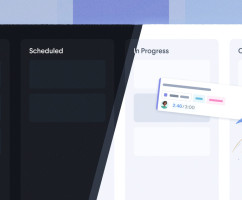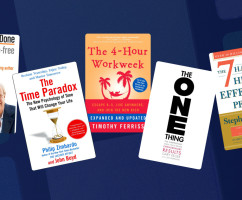Most of us want a straightforward option for prioritizing our tasks. With so many prioritization strategies to choose from, how do you pick one that’s right for you?
Well, if you’re managing a team, I’m going to start by recommending both the Eisenhower Decision Matrix and the ABCDE prioritization strategy. Both function similarly in that they help you figure out which tasks are most important and which tasks can be delegated or ignored. This is particularly helpful if you work with people you can outsource tasks to.
If you’re going it alone, or just looking to get better at managing your own time, well, all of these strategies can be made to work for you, possibly only without the delegation step.
So, without further ado, let’s jump right in and see what the ABCDE method is all about.
What is the ABCDE Method?
The ABCDE method is a prioritization strategy invented by productivity expert, Brian Tracy. Part of the reason this technique works so well is that it’s simple to learn and easy to implement. By prioritizing tasks you can focus your time where it is most impactful, which is ultimately what sets those that are highly productive apart so finding the right system for you is critical. Finding a prioritization strategy and productivity method that works for you is key. Read on to see if the ABCDE method might be a good fit for you.
How does the ABCDE Method work?
- Start by listing all of your tasks.
- Next, apply the letters, A, B, C, D, and E to those tasks.
- Focus on the highest priority tasks and work through your list.
A tasks
“A” tasks are the most important items. They’re things that have consequences if you don’t do them. They may also be those things that have the biggest impact/return. You might call these the “ugly frogs” if you also use the Eat That Frog methodology. If you have more than one of these items on your list, you can list them like this: A-1, A-2, A-3, and so on, in order of importance.
B tasks
“B” tasks have only minor consequences. They’re important but not that important. They may inconvenience someone slightly, or make them a little unhappy but they’re not an A item. If you have an A item on your list, do it first.
C tasks
“C” tasks are the ones that have no consequence. They might be things that are nice to do but really don't move the needle in any way. Move on to these tasks only when there are no A or B tasks left. Finishing your C tasks is the equivalent of inbox zero!
D tasks
"D" stands for delegate. Yep, that's right, these are the tasks that you can delegate. This will free up more of your time and mental energy to work on those A and B tasks. Make sure the task will be an A or B for the assignee, otherwise, you might actually be looking at a “C” or “E” task and you should treat it accordingly.
E tasks
"E" stands for eliminating. Don’t waste time on tasks that don’t move the needle for you or your business. It can feel great to knock out a bunch of tasks, but in reality, you are setting yourself back when spending time on anything other than A and B tasks.
How to use the ABCDE Method with HourStack
The ABCDE Method works wonderfully with HourStack’s scheduling and time tracking software. In your task or project management tool of choice, label your tasks A, B, C, D, or E as described above. Using an integration, just drag and drop those tasks onto your calendar to block out the time to work on them. Start by scheduling your A tasks first in order of priority, then B, and finally if you have time available your C tasks.
Updated September 21, 2022 in Tips & Tricks






